These Plant-Based Foods Have the Best Protein Content
A new study has confirmed that replacing
red meat with plant-based protein can help keep your heart healthy. The
study, based on 30 years of observation, says that by replacing red meat
with high-quality plant foods filled with protein such as beans, nuts,
or soy, one can reduce the risk of coronary heart disease by 17%.
We all know that protein is essential for
the growth and repair of the body and it helps in maintaining good
health. It also helps keep us fit, strong, and full all day. According
to health experts, males should ideally consume 63 grams of protein
daily while females should ensure having at least 52 grams of protein
every day.
With so many nutritious plant-based foods available, more and more
people these days are choosing to shift away from meat products to
fulfill their protein requirements. Now, plant-based diets aren’t
exactly new. But can we really get all the protein our body needs from
plant sources alone? Yes, we can. The right plant-based foods are great
sources of protein and several other nutrients. Here, we have listed
some of the best sources of plant-based proteins that you should add to
your diet.
1. Tofu, tempeh, and edamame
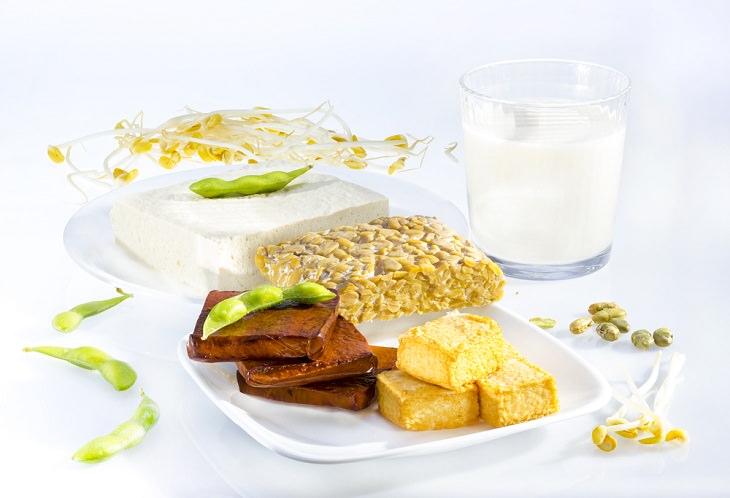

Soy products such as tofu, tempeh, and
edamame are considered the richest sources of protein. Tofu, for
instance, has about 15 grams of protein per 4 oz serving (cooked). While
tofu doesn’t have any taste, it takes on the flavor of the dish it’s
prepared, making it a versatile addition to your diet. You can even try
tofu as a meat substitute in a soup or a sandwich.
Edamame beans are immature soybeans and contain 8.5 grams of protein per
half-cup cup while tempeh contains about 15 grams of protein per half a
cup. Tempeh has a nutty flavor and can be used in soups, chilies, and
burgers. As for edamame, it can be used in a variety of ways ranging
from salads to appetizers.
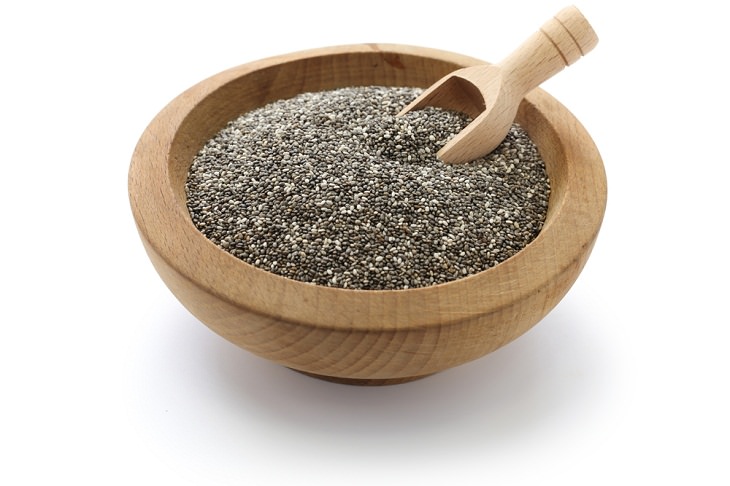
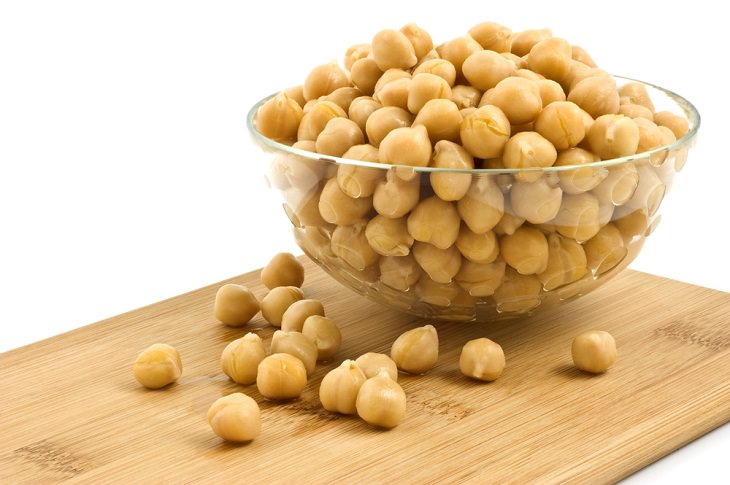
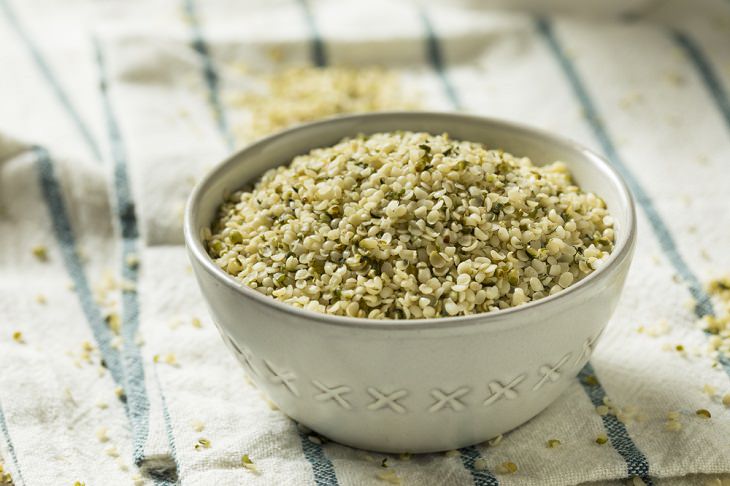
All of these soy products also contain
healthy levels of calcium and iron and can hence be used as substitutes
for dairy products.
2. Chia seeds

Chia seeds are obtained from the Salvia
hispanica plant and contain about 3.5 grams of protein per two
tablespoons. These wonderful seeds are low-calorie foods rich in fiber
and heart-healthy omega-3 fatty acids. Furthermore, they also contain
iron, calcium, selenium, and magnesium.
If soaked overnight, chia seeds turn into a gel-like substance as they
absorb water. So, while they have a bland taste, they can be added to a
smoothie or on baked goods to make for a healthy recipe.
3. Lentils 

Lentils aren’t just a good source of protein, they have great fiber
content, too. This legume provides 9 grams of protein per half-cup and
also offers 7.9 grams of dietary fiber in the same amount. Lentils are
also rich in folate, manganese, and iron.
One of the best things about lentils is that they can be added to
salads, soups, curries, and stews to enhance their flavor. These
nutritional powerhouses are the perfect plant-based source of protein to
add to your daily meals.
4. Chickpeas

Cooked chickpeas are an excellent addition to any plant-based diet as
they contain around 7.25 grams of protein per half-cup. Also known as
garbanzo beans, these legumes can be eaten hot or cold and can be easily
added to soups, stews, and curries. You can even roast them in the oven
and sprinkle some spices on top to prepare a nice healthy evening
roasted chickpeas snack.
5. Hemp seeds

Hemp seeds are a complete protein and offer 5 grams of protein per
tablespoon. They also contain generous amounts of magnesium, iron,
calcium, zinc, and selenium. Moreover, hemp seeds are a solid source of
omega-3 and omega-6 fatty acids. Much like chia seeds, hemp seeds can be
added to your diet by sprinkling them on a smoothie or morning muesli.
They will also be great dressings for homemade salads.
6. Green Peas 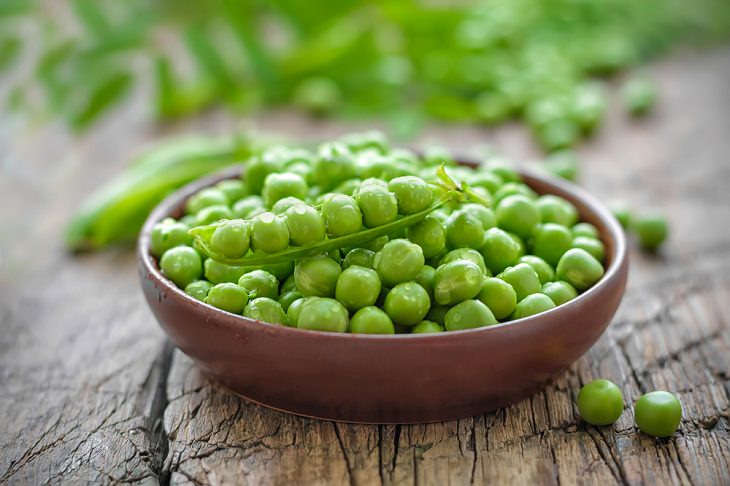

Green peas are one of the best plant-based sources of protein and they
also contain many crucial vitamins and minerals. These healthy little
peas have 9 grams of protein per cooked cup (about 240 ml). The best
part about them is that one serving of green peas will essentially cover
almost 25% of your daily vitamin A, C, K, manganese, folate, and daily
fiber needs. They are also a great source of several B vitamins.
Green peas can be added to your daily diet as a side dish, or in the
form of pea soup. You can even add
them to mashed potatoes to enhance
the taste while also making them healthier.
7. Quinoa 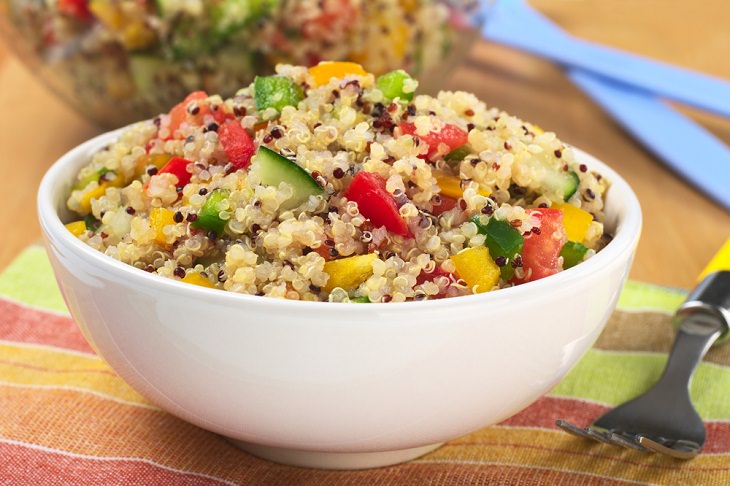

Similar to hemp seeds, quinoa is considered
a complete protein. This high-protein grain contains 8 grams of protein
per cup when cooked. It is also rich in nutrients like magnesium, iron,
fiber, and manganese. Quinoa is highly versatile and a really great
plant-based protein option. You can have it as a meal by combining it
with various vegetables or simply cook it in vegetable broth. Add quinoa
to soups or salads to have a delicious and protein-rich meal.
8. Soy Milk
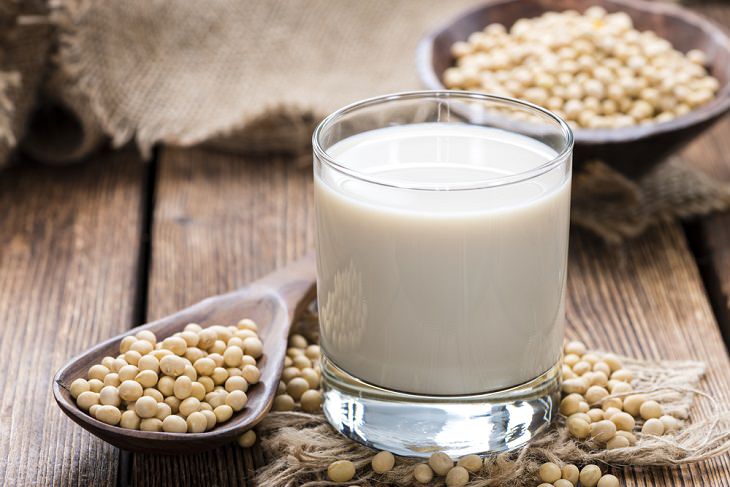

As we mentioned earlier, soy products are
rich in protein. If you want to find a good alternative to cow's milk
for your diet, you can easily choose soy milk as it has as much protein
as cow’s milk and is lower in calories than whole milk. It contains very
little saturated fat and is also a terrific source of potassium,
calcium, vitamin D, and vitamin B12.
A 240 ml cup of soy milk contains 7 grams of protein which can help
support healthy muscles and organs. Soy milk can easily be found in most
supermarkets. You can consume it every day as a glass of milk or even
use it in some baking recipes like soy milk cake, vegan apple cake, or
vegan corn muffins.
9. Wild Rice
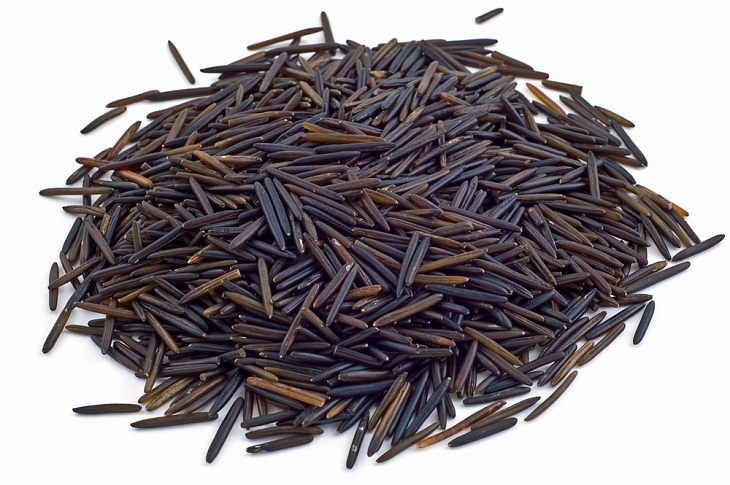

Wild rice is higher in protein than regular
rice. One cooked cup (about 240 ml) of this rice offers 7 grams of
protein apart from also providing fiber, magnesium, copper, manganese,
phosphorus, and B vitamins. It has a nutty and chewy texture and eating
it regularly will help improve your heart’s health while lowering your
risk of type 2 diabetes. You can eat wild rice alone or add it to
salads, soups, casseroles, and even desserts.
Bear in mind, however, that wild rice may also contain arsenic, and to
reduce its content you should wash it thoroughly before cooking.
10. Nuts and Seeds
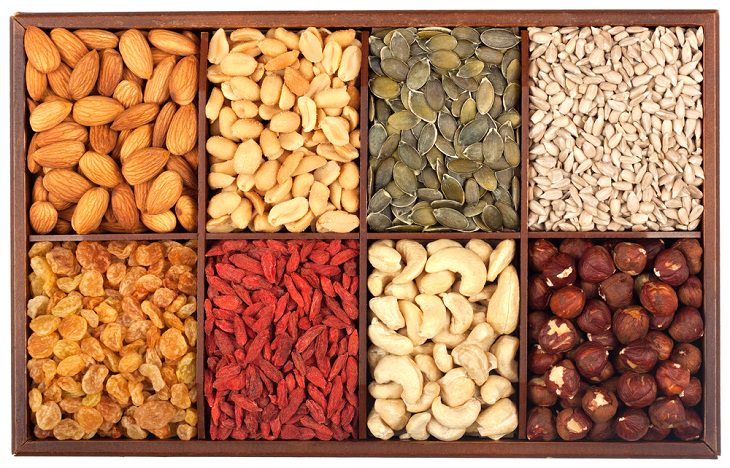

One of the easiest ways to increase the
amount of protein in your diet is to eat different nuts and seeds. We
have already mentioned a few seeds that you can try above. Other than
that, you can start having a variety of nuts as they are portable and
don’t require refrigeration. Nuts like almonds, walnuts, cashews, and
pine nuts make for a delicious, protein-rich snack or an excellent
addition to meals. You can even carry them around in a little box to
your workplace or have them in the morning with breakfast. Ideally, you
should have them raw, with no other additives to maximize their nutrient
benefits.
Nut butters can also be made into a vital part of your everyday snack
plate. Two tablespoons of the average nut butter have 6 grams of
protein. However, do opt for natural nut butters rather than the
household brand varieties as the latter generally contain oil, sugar,
and excess salt.
11. Beans
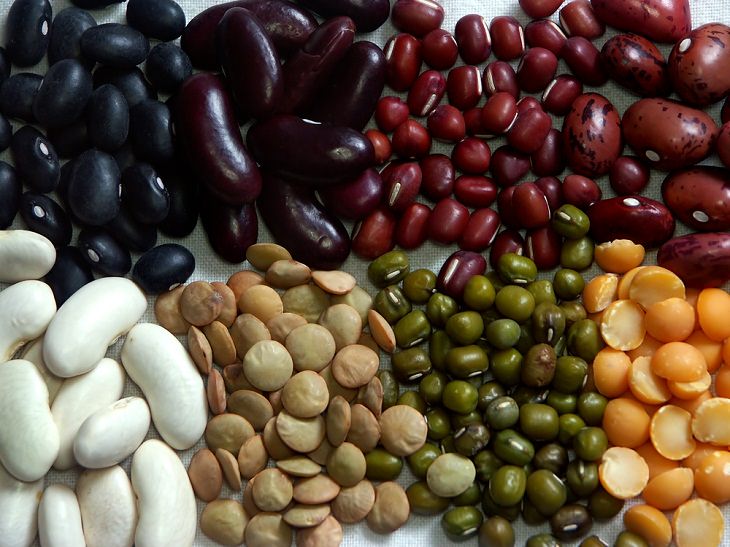

Much like legumes, beans are considered to
be one of the richest plant-based sources of protein. A half-cup of
black beans, for instance, offers 7 grams of protein. Kidney beans are
also super healthy and a major source of protein everywhere in the world
and for good reason: 3.5 ounces (100 grams) of boiled kidney beans
consists of almost 9 grams of protein. They can be eaten in many
delicious ways, too. Like you can make bean soups during the winter
months or even use them to make a veggie burger.